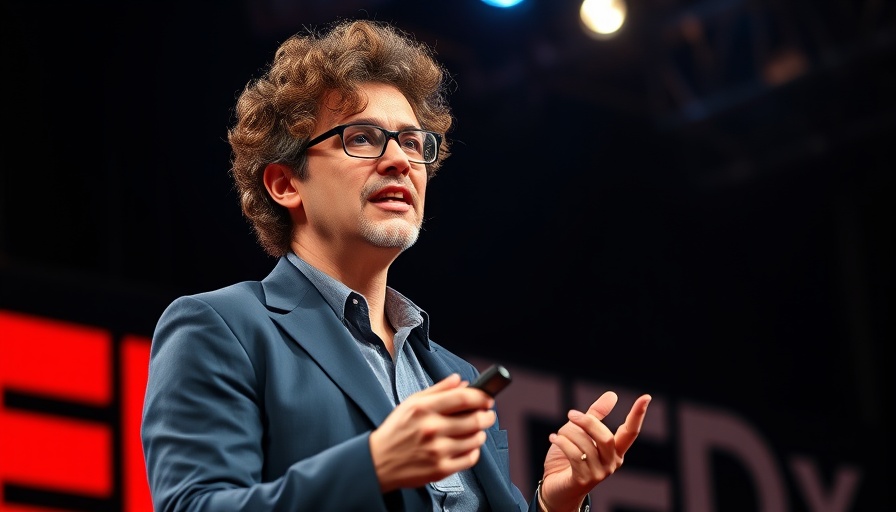
The Promise of Artificial Retinas for Restoring Sight
As we advance towards a new era defined by technology, one of the most promising developments lies in the world of artificial retinas—a groundbreaking solution that holds the potential to restore vision to countless individuals impacted by retinal diseases. Dante Muratore’s TEDx talk at Rome about artificial retinas illuminates a pathway towards using technology not just for innovation's sake, but as a transformative tool for improving human lives.
In 'How artificial retinas could cure blindness', the discussion dives into the intricate relationship between advanced technology and healthcare, exploring key insights that prompted further analysis.
The Science Behind Vision Loss
Understanding how vision loss occurs is essential in grasping the revolutionary steps toward a solution. Retinal diseases like macular degeneration and retinitis pigmentosa hijack the retina, the critical layer of neural tissue responsible for converting light into signals that the brain can interpret. As this tissue degrades, the connection between the eye and brain breaks down, leading to profound blindness. The artificial retina aims to bridge this gap by electrically stimulating the retina, creating a synthetic neural code mimicking the natural responses typical of a healthy retina.
Overcoming Technological Hurdles
Despite the clear intent behind artificial retinas, several challenges loom large. The complexities of the retina itself are daunting. An aspirational vision of restoring sight hinges on our ability to reproduce the intricate functionality of various neurons without confusion. Muratore’s analogy of an orchestra sheds light on this complexity—each neuron type functions like a musician within an orchestra: individually significant yet synergistically essential to produce a harmonious output. Just as a conductor guides musicians through a symphony, technology must carefully orchestrate neuron stimulation to evoke the right sensory responses.
Microelectronics: A Leap Forward in Retinal Technology
Fortunately, advancements in microelectronics provide hope. At Del University of Technology, efforts are underway to condense sophisticated technology into devices small enough to fit within the human eye. These devices, outfitted with thousands of electrodes and controlled by high-performance chips, promise to deliver precise stimulation to the retina. However, heralding a phase of personalization during runtime is crucial for developing artificial retinas that can restore vision effectively. The calibration process—the learning phase for the device—must fine-tune how these electrodes interact with the brain's neural architecture, creating a personalized experience for every user.
Anticipating Future Innovations
As Muratore highlighted, the implications of high-fidelity artificial vision extend far beyond disease restoration. If we can decode and replicate the neural patterns of the retina, the door opens to treating various neurological disorders beyond vision loss, encompassing conditions like Parkinson's disease and epilepsy. This expanded capability leads to a critical reflection on the ethical implications: How do we, as stewards of this transformative technology, ensure it is used responsibly?
The Role of Continuous Reflection and Ethical Considerations
The conversation initiated by Muratore on ethical usage resonates profoundly with technologists and society alike. As technology embedded deeper into our cognitive and sensory experiences, reflecting on its implications becomes paramount. Just as in Muratore’s vision of a neural orchestra, careful consideration must guide how we enable technology to shape our experiences. Fostering an environment where technology is steered toward empathy, equity, and accessibility, and serves to uplift rather than control is critical.
Acting Towards a Better Future
In a world where innovation drives progress, we must harness this momentum not only to improve technical capabilities but also to address broader societal issues. The journey towards integrating artificial retinas into practical healthcare applications is a testament to the power of combining prowess in fields such as neuroscience, microelectronics, and ethics. Those of us who are observers of this rapid technological evolution must become advocates for its ethical application, ensuring that future innovations contribute positively to the global society.
Conclusion: The Orchestra of Future Technologies
In the quest to restore human sight, artificial retinas exemplify how technology can restore what's lost and redefine human capabilities. In the spirit of Muratore’s TEDx talk, it falls upon each of us to reflect on how we want to engage with such transformative technologies. By fostering responsible discourse around innovative practices, we can lead the way to a brighter future where technology inspires creativity, inclusivity, and solutions for the greatest challenges faced by humankind.
 Add Row
Add Row  Add
Add 




Write A Comment